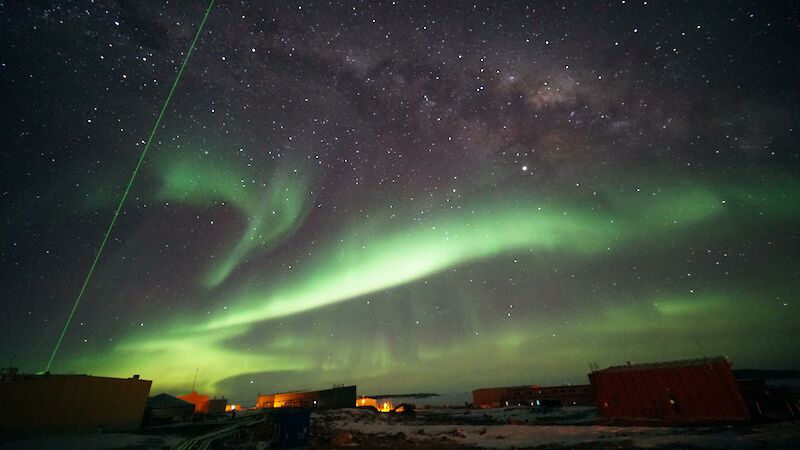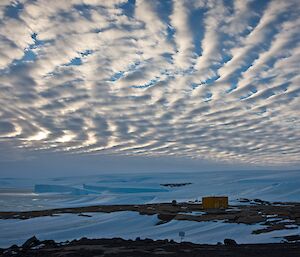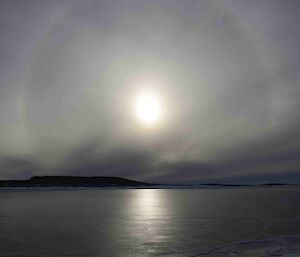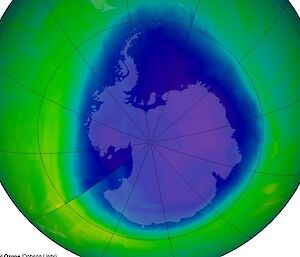The variable nature of our atmosphere is part of our daily lives. This variability includes regional and hemispheric-scale patterns (such as the El-Nino Southern Oscillation) but the processes that drive these patterns need further study.
The vertical reach of these patterns includes the Antarctic stratosphere (about 15-50 km up), which is (and will be for some time to come) significantly affected by the springtime destruction of ozone.
Numerical models of our atmosphere allow us to study the climate’s response to changing conditions. (Numerical models use physical observations and mathematical equations to represent a system).
These models are being asked to represent increasingly complex processes throughout more of the atmospheric column. New observations are needed to provide a test bed for the expansion of model domains.
Our research aims to improve:
- Understanding of ‘teleconnections’ (where weather changes at one location are linked to changes elsewhere) between Antarctic and Southern Ocean weather systems, to provide data for weather predictions and climate projections for Australia.
- Understanding of the connections between ozone concentrations and characteristics of the polar vortex (a region in the stratosphere, 15–50 km up, where strong winds around the pole prevent air mixing with the rest of the atmosphere). This will help us project the climate system response to ozone recovery, and changes to wind patterns and storm frequencies at high southern latitudes.
- Representation of atmospheric processes in numerical models.
Our research is focused in two linked areas:
Characterising atmospheric processes, variability and change
This research aims to answer two key questions:
- What are the patterns of variability and change in the high-latitude Southern Hemisphere atmosphere?
- What processes drive change and variability?
To answer these questions we are:
- Studying the drivers of regional and hemispheric climate variability – the El-Nino Southern Oscillation (ENSO), the Southern Annular Mode (SAM) and the Pacific Decadal Oscillation (PDO).
- Studying the thermal and dynamical state of the Antarctic atmosphere over many seasonal cycles and several solar activity cycles, to help validate climate model simulations and to separate sources of natural climate variability from human-induced change.
- Investigating the climate response to restored ozone levels. Ozone recovery during the next decade will influence the future climate of the Southern Hemisphere, although the magnitude of this influence is unclear.
Model development for weather and climate predictions
The research also aims to answer two key questions:
- What high latitude (polar) processes need to be better characterised to improve atmospheric models for weather and climate prediction?
- What atmospheric observations are required to better validate the next generation of models?
These questions will be investigated by:
- Improving our understanding of the evolution of polar low pressure systems, the processes that lead to the formation and variability of frontal systems and the radiative properties of cloud and aerosol particles.
- Observations of the boundary between the Upper Troposphere and the Lower Stratosphere (UTLS) and of the atmosphere above. These will improve our knowledge of the processes that link our weather to the stratosphere. Air exchange can influence the role greenhouse gases play in the region. Ozone destruction affects both the chemical and dynamical state of the stratosphere, both of which are poorly represented in climate models.
- Studying the role of atmospheric waves that are too small to be included in long-term simulations of climate but that are vital in driving atmospheric circulations. Climate models cannot accurately represent the chemistry of the southern springtime polar stratosphere possibly due to the way small-scale waves (known as gravity waves) are represented. Observations of these waves are needed to improve their representation in models.
These investigations will contribute to the next generation of climate models.







